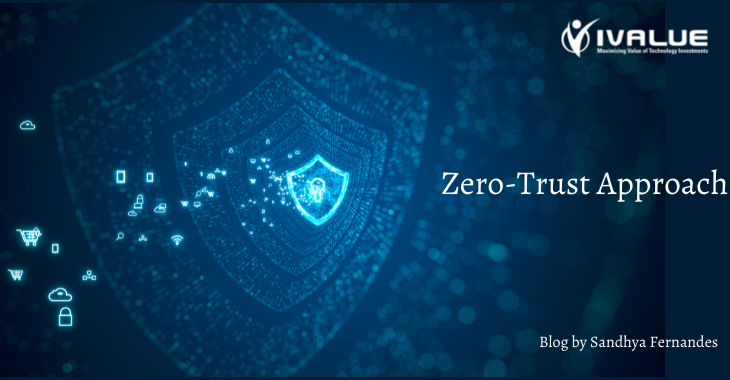Zero-trust Approach to Cybersecurity Gains Further Traction in 2022 - Sandhya Fernandes, Channel Sales Manager, iValue InfoSolutions

Today, the prevailing hybrid working culture, cloud technologies, edge-computing, IoT, and other factors have given rise to newer business models where employees and business partners have ubiquitous access to the organization’s digital assets and data. The situation has led to the expansion of the threat landscape and a rise in identity-based attacks. With the legacy perimeter continuing to fail in the face of a growing remote workforce, organizations need to relook their remote security strategy. Enter Zero-Trust Network Architecture (ZTNA).
Gartner defines ZTNA as “a product or service that creates an identity- and context-based, logical access boundary around an application or set of applications.” Access is restricted where no user or device is trusted in the environment. Any unauthorized attempt to gain access to the system is frozen.
ZTNA has gained tremendous ground over the last few years, but more so during the pandemic. According to a study by Okta, “More than three-quarters (78%) of companies around the world say that zero trust has increased in priority and nearly 90% are currently working on a zero trust initiative (up from just 41% a year ago).”
The pandemic, remote workforce, growing cyber threats, and rising cloud adoption may seem enough to push the zero-trust model forward. But those aren’t the only reasons. We take a closer look at how ZTNA continues to gain traction in 2022.
Higher demand for endpoint visibility and control
With remote work and BYOD trends followed in organizations, CISOs are working on consolidating endpoint systems. Unified endpoint management (UEM) provides IT teams a single window of operation bringing together user identity, enterprise security, and remote access under the ZTNA framework. UEM software enables organizations to take control of endpoints and enforce a zero-trust policy across multiple platforms. Irrespective of the operating system, UEM sits on top of your existing system equipped to prevent data breaches. It also allows CISOs to define conditional user access and compliance based on organizational policies. For example, users can be blocked from accessing data based on time zones or geographical location.
Focus is on enhancing the effectiveness of IAM solutions
Identity and Access Management (IAM) primarily identifies the users, applications, and systems on the network and controls their access to resources. An identity is the foundation of a zero-trust network. This identity sets the context or intention of user access. The process aims to improve security, productivity, and user experience by provisioning user accounts, ensuring access control, password management, single sign-on (SSO), and regulatory compliance. Security teams are now trying to further improve IAM integration across the network with quicker, easier, and more secure ways to permit and revoke access. Organizations are looking for IAM-enabled ZTNA solutions that build identity directly into the ZTNA framework.
Automated Patch Management is on the rise
While a zero-trust strategy helps improve endpoint resiliency and control with endpoint management tools and IAM solutions, there is a potential risk of conflict due to the different software solutions. To avoid this challenge, Automated Patch Management processes are being adopted by security teams as they are more reliable and timesaving. Patches also can be prioritized based on potential impact where future exploits can be prevented. An ongoing patching process is critical in today’s expanding threat landscape.
Investing in Zero-trust security measures is on the rise, and the approach is further shaping the datacenters, cloud environments, and networks at business houses. Although the zero-trust approach increases organizational agility and improves the cloud and security posture, there are challenges in its full implementation. Lack of subject expertise and skills required to implement best practices for micro-segmentation, which is key to Zero-trust strategy, is a growing business concern. Due to this, security teams are failing to effectively demonstrate the advantages of Zero-trust technology to the C-Suite, thus impacting stakeholder buy-in. Adopting a phased approach, from gaining visibility to building security controls, will ensure a successful Zero-trust implementation.



